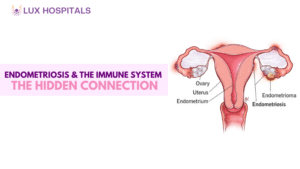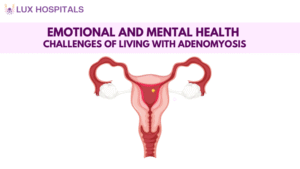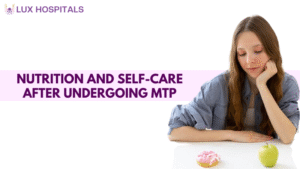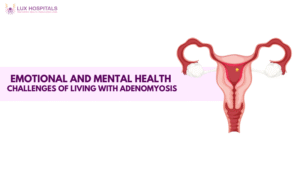Hormonal Therapy for Fibroids: Benefits, Risks, and Effectiveness
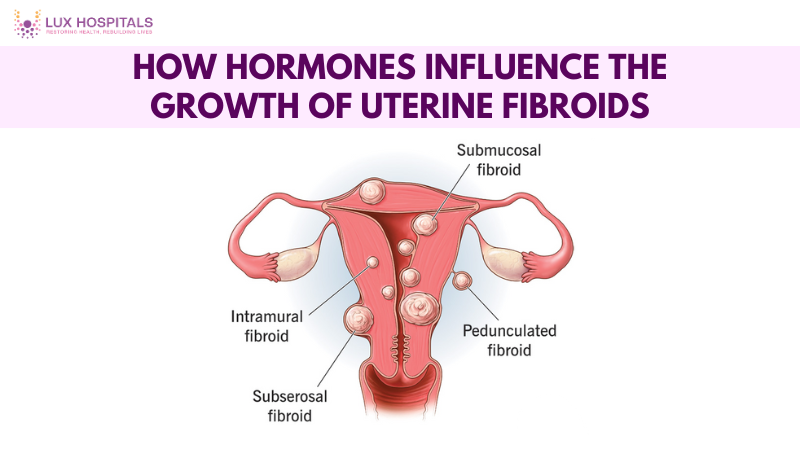
Uterine fibroids are noncancerous uterine growths that frequently cause pelvic pain, heavy menstrual bleeding, or problems with conception. One of the most effective non-surgical ways to manage these symptoms is Hormonal Therapy for Fibroids. This therapy helps shrink fibroids or control symptoms by balancing hormone levels. In this blog, we’ll explore the benefits, risks, and overall effectiveness of Hormonal Therapy for Fibroids, helping you make an informed health decision.
Understanding Hormonal Therapy for Fibroids
Hormonal Therapy for Fibroids works by controlling the hormones—mainly estrogen and progesterone—that stimulate fibroid growth. Since fibroids are sensitive to these hormones, managing their levels can reduce symptoms and even shrink the fibroids.
Key Types of Hormonal Therapy for Fibroids include:
- Agonists of Gonadotropin-Releasing Hormone (GnRH): These drugs cause fibroid shrinking by momentarily lowering estrogen levels.
- Oral Contraceptives: Birth control pills help regulate periods and reduce heavy bleeding caused by fibroids.
- Progesterone-Releasing IUDs: These devices release hormones locally to manage bleeding and pain.
- Selective Progesterone Receptor Modulators (SPRMs): They target progesterone receptors to slow down fibroid growth.
Each of these therapies can be tailored to the patient’s needs, depending on symptom severity and future fertility goals.
Benefits of Hormonal Therapy for Fibroids
Hormonal Therapy for Fibroids offers numerous advantages, especially for women who wish to avoid surgery. Among the most noteworthy advantages are:
1. Reduction in Fibroid Size:
- Fibroids can be significantly reduced by hormone therapies such as GnRH agonists, which frequently alleviate symptoms in a matter of weeks.
2. Control of Heavy Bleeding:
- Hormonal therapy lowers the risk of anaemia and heavy menstrual flow by balancing progesterone and estrogen.
3. Pain Relief:
- Pelvic pressure and pain often significantly reduce as fibroids shrink and periods become shorter.
4. Non-Surgical Option:
- For women who are not ready for surgery or want to preserve fertility, Hormonal Therapy for Fibroids provides a safe, temporary solution.
5. Improved Quality of Life:
- Reduced pain, better energy levels, and regulated cycles can significantly enhance daily comfort and well-being.
Risks and Side Effects of Hormonal Therapy for Fibroids
While Hormonal Therapy for Fibroids is effective, it has possible negative consequences as well because of hormone changes. Patients are better able to make informed decisions when they are aware of these factors.
Common side effects include:
- Hot flashes or night sweats
- Headaches and mood swings
- Vaginal dryness
- Weight gain
- Temporary bone density loss (especially with long-term GnRH use)
In most cases, these side effects are temporary and subside once therapy is stopped or switched. Doctors usually recommend combining therapy with calcium supplements or lifestyle changes to minimise risks.
Effectiveness of Hormonal Therapy for Fibroids
The effectiveness of Hormonal Therapy for Fibroids varies from person to person but is generally high for symptom control.
- Studies show that GnRH agonists can reduce fibroid size by 30–60%.
- SPRMs and hormonal IUDs are particularly useful in controlling excessive bleeding.
- However, once the therapy stops, fibroids may gradually return to their original size.
That’s why doctors may recommend combining Hormonal Therapy for Fibroids with other treatments such as uterine artery embolisation or surgery for long-term results. It is most effective as a pre-surgical or short-term management option for women nearing menopause or preparing for fibroid surgery.
Who Can Benefit Most from Hormonal Therapy for Fibroids?
Hormonal Therapy for Fibroids is best suited for:
- Women with mild to moderate fibroid symptoms
- Those looking to delay or avoid surgery
- Perimenopausal women, as fibroid symptoms often reduce naturally after menopause
- Patients with anaemia due to heavy menstrual bleeding
It may not be ideal for women planning an immediate pregnancy since some therapies temporarily prevent ovulation. Before starting treatment, always consult a gynaecologist for advice.
Lifestyle Tips to Support Hormonal Therapy for Fibroids
A few lifestyle adjustments can assist in preserving hormonal balance and general well-being, which will improve the outcomes of hormone therapy for fibroids.
Tips include:
- Maintain a balanced diet rich in fruits, vegetables, and lean proteins.
- Exercise regularly to improve circulation and reduce estrogen dominance.
- Manage stress through yoga, meditation, or breathing exercises.
- Steer clear of processed foods, alcohol, and tobacco because they can influence hormone levels.
These lifestyle modifications support treatment outcomes and overall reproductive health.
When to See a Doctor?
If you experience symptoms such as lower abdominal pressure, intense cramps, or prolonged menstrual bleeding, consult a doctor. They can determine whether you are a good candidate for hormonal treatment for fibroids. Timely medical advice can prevent problems and improve the effectiveness of treatment.
Conclusion
A practical and secure substitute for surgery in the treatment of fibroid symptoms is hormonal therapy. It helps women take back control of their health by reducing bleeding, pain, and fibroid size. To ensure the best result, however, it is advisable to discuss your options with a licensed gynaecologist. At Lux Hospitals, expert gynaecologists use cutting-edge diagnostic equipment and specialised hormonal treatments to provide the best care and comfort for women with fibroids.
Frequently Asked Questions
Hormonal therapy for fibroids works by lowering the levels of progesterone and estrogen, which are responsible for fibroid growth. In addition to reducing fibroid growth, this hormonal balance also alleviates symptoms like discomfort and excessive bleeding. The type and length of therapy may affect the shrinkage.
Yes, when given by a licensed physician, hormonal therapy for fibroids is usually safe. However, minor adverse effects, including headaches, weight gain, or hot flashes, are possible. Frequent observation guarantees that these effects stay controllable.
No, Hormonal Therapy for Fibroids does not permanently cure fibroids. It temporarily controls symptoms and reduces the size of fibroids. Once the therapy stops, fibroids may grow again, so ongoing management or surgery may be required for long-term results.
Most women notice improvement within 4 to 8 weeks of starting Hormonal Therapy for Fibroids. Symptoms like heavy bleeding and pain often improve quickly, but the full effect on fibroid size can take a few months.
Most Hormonal Therapy for Fibroids options temporarily prevent ovulation, making pregnancy unlikely during treatment. However, fertility typically returns once the therapy is stopped. Discuss pregnancy plans with your doctor before starting treatment.

















